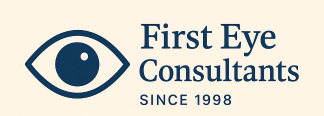Introduction
Imagine going blind from a condition that takes just 15 minutes to cure. For millions in low-resource settings, cataracts are not a treatable inconvenience but a life sentence. In this post, we explore the reality of cataract blindness in poor countries — what causes it, why it remains untreated, and how we can restore sight affordably.
What Is a Cataract?
A cataract is the clouding of the natural lens of the eye, which causes:
- Blurry or dim vision
- Glare and difficulty with bright light
- Impaired night vision
- Eventual blindness if untreated
It is age-related in most cases but can also be caused by trauma, malnutrition, or congenital factors.
Why Is Cataract Still a Problem in Poor Countries?
In wealthy nations, cataract surgery is routine and often scheduled before significant vision loss. In many
African and South Asian villages, however:
- People wait until they are nearly blind
- Cost is a major barrier
- Lack of surgeons and operating microscopes delays care
- Misinformation and fear prevent patients from seeking help
Many elderly people live for years in darkness, dependent on others for basic needs.
The Human Impact
A blind grandmother may:
- Lose her role as family caregiver
- Become socially isolated
- Be viewed as a burden
- Increase pressure on working adults and children to provide care
And yet, with one simple operation, she could see again the next day.
The Surgical Solution: Low-Cost, High-Impact
Cataract surgery in low-resource settings can be delivered through:
- MSICS (Manual Small Incision Cataract Surgery): cost-effective and highly effective
- High-volume cataract camps run by outreach teams
- Community screening and transport to surgical centers
Some programs (e.g. Aravind in India) perform thousands of surgeries per week at a fraction of Western
costs, with excellent outcomes.
What Makes a Cataract Program Work?
Successful community-based cataract programs usually include:
- Outreach and education in rural villages
- Screening camps and referral networks
- Transport for blind patients
- Subsidized or free surgery
- Post-op care and follow-up
- Training of mid-level staff for pre-op and post-op roles
A Personal Case from the Field
In a rural eye camp I helped supervise, an elderly farmer was led in by his grandson. He had been blind for 5 years. He told us he wanted to die — he could no longer see his fields or his grandchildren’s faces. The day after cataract surgery, he wept. “The gods have returned the sun,” he said. That boy no longer had to stay home from school to guide him.
Call to Action
If you’re a clinician, policymaker, NGO leader, or donor, cataract surgery is your most immediate, scalable, and impactful investment. Every dollar spent here restores dignity, productivity, and independence.
Conclusion: Cataract Blindness Is a Choice — Ours
We have the skills. We have the tools. What we need is the determination to ensure no one remains blind because they were born on the wrong side of wealth. In the battle against needless blindness, cataract is the low-hanging fruit — and it’s time we picked it.
